Working with Merino wool can be a pleasure, but it can also be intimidating for a beginner. You may be wondering how to felt your wool so that you can ensure a high-quality product. We have thoroughly investigated this process for you and have found various methods of felting that can help you get started.
To felt Merino wool, you'll need to know what you intend to do with your yarn first. All felting relies on humidity and pressure to form the wool into the desired shape or form. There are many ways to felt wool. The following are some of the more popular and easy methods to prepare your wool:
- Hand felting for big stitch yarn
- Dry felting using a spray bottle and clothes dryer
- Wet felting for crochet and knit projects
- Needle felting to make felt crafts
It's important to learn the best methods for felting your Merino wool so that you can bring out the best characteristics of the material. Keep reading as we break down the steps for each method and discuss which one is suited for each type of project.
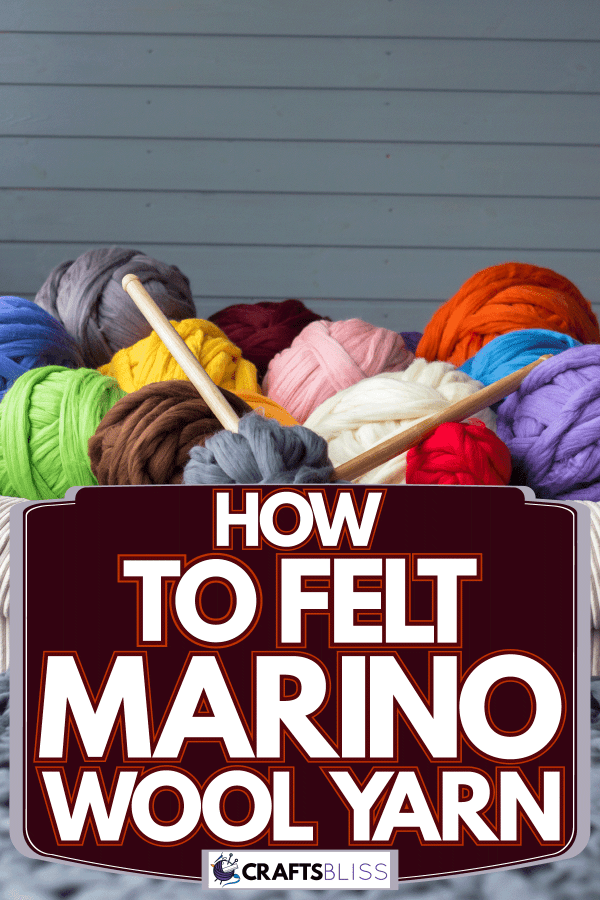
What Is Felted Merino?
Felted Merino is wool that has been pulled, pressed, or agitated with some form of moisture to get the fiber to form dense, strong yarn that is then used to make items such as blankets and sweaters.
Felted Merino can be made by simple hand pulling where the moisture comes from your hands and the pressure comes from repeated pulling. Use a washer or a dryer to felt Merino for tighter stitch projects that will need to hold up under wear and tear.
Do You Need To Felt Merino Wool?
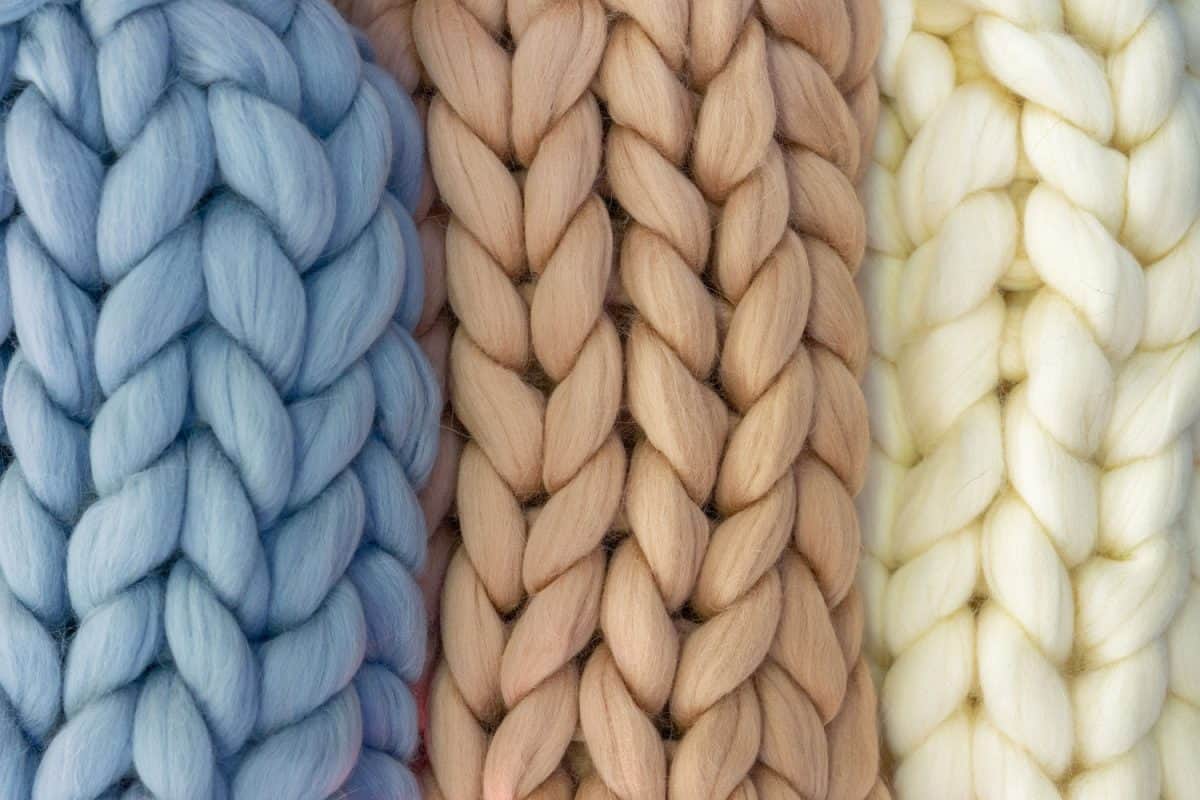
Merino wool roving is wool that has been slightly manipulated to form fibers that are loosely connected but can still be easily pulled apart. In this form, the material can still shrink, shed, or be used for anything from batting or stuffing to stitch projects. It is typically sold in yarn balls.
Click here to see Merino wool roving on Amazon.
All felting processes will create a stronger, denser material that can then be crocheted, knitted, sewn, and more.
To avoid extreme shrinkage and shedding in your final project and to make your wool easier to work with, you should felt your wool. Felting also reduces the scratchiness associated with wool, making it more pleasant to touch.
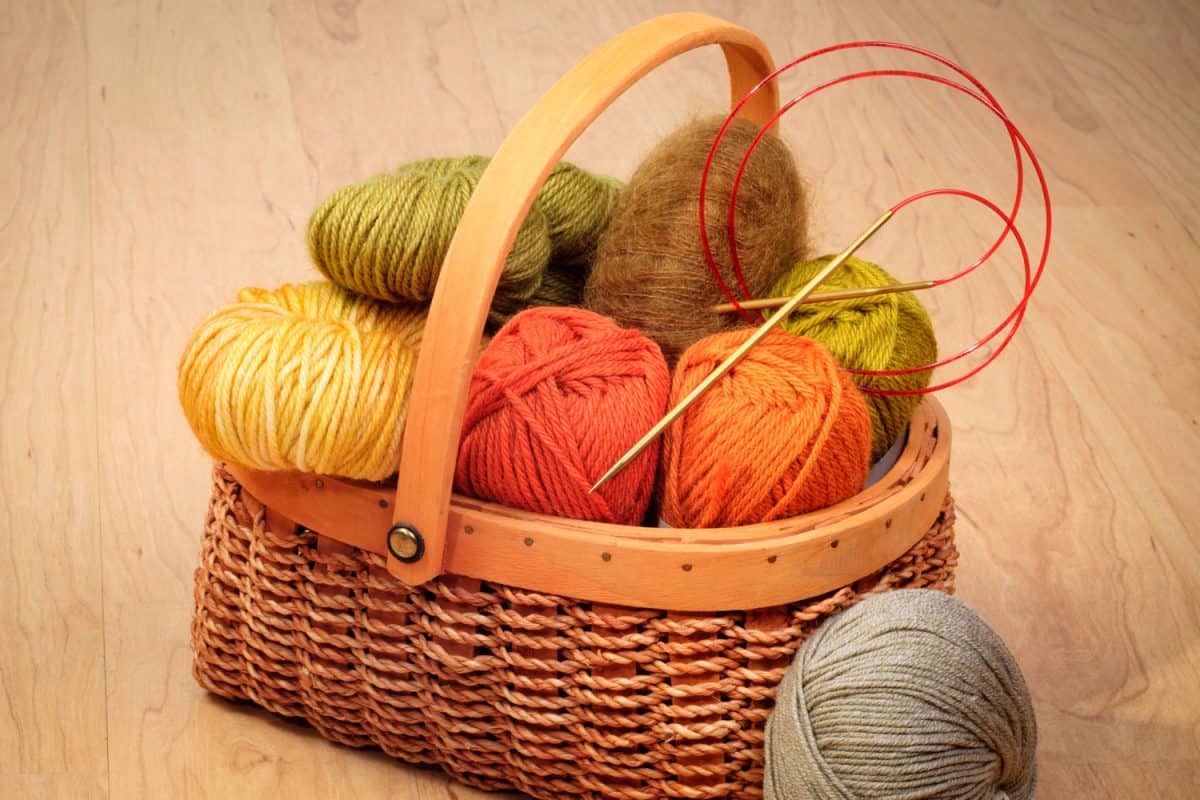
Hand Felting For Big Stitch Work
The simplest method of felting is to pull the wool using your hands to apply the friction. Using only your hands will create a weave and diameter that is great for big stitch projects. Use this method for projects where you wish to retain most of the fluffiness of the original material.
To hand dry felt your wool by hand, grasp the wool with one hand, and pull it through a semi-tight grip of your other hand until you reach the other end. The coils should lie neatly on a clean floor or table. Repeat this process until the wool reaches the size and weave strength needed—usually around three to four times.
Dry Felting Using A Spray Bottle And Dryer
If you want to retain most of the original diameter of the wool but need to reduce shedding and make a tougher material, use a dryer and spray bottle to felt your wool.
To start, use one hand to pull the wool through the other hand, making a loose coil on a table or the floor. Follow the same process as shown in the video above, but you would only need to go end to end once.
Loosely tie at two separate points from the center out using the ends or another material to keep your yarn in its coil and to avoid knotting in the dryer. Use the spray bottle to dampen your yarn. Place it in the dryer and dry on the lowest setting for 10 to 15 minutes.
Wet Felting For Crochet And Knit Projects
If you have a front-loading washing machine, you may want to follow a more complete felting method. Wet felting is great for wearable projects like hats and sweaters. Not only does it create the smallest diameter yarn but it is also the best method for reducing irritations and shrinkage in the fabric.
To start, wind the roving around two chair backs that have been pushed together side by side. Tie the coil off from the center to the outside at four points. Use material that is the same color or lighter than the wool you are felting.
Put your coil in the washing machine using the wash and spin cycle. If you can select the spin type, set it on the lowest setting needed for your amount of yarn. Smaller amounts will only need a low spin.
After the washer completes its cycle, remove the yarn and cut the bindings. Drape your wool on a large drying rack in a well-ventilated area until dry.
Can You Felt Wool By hand?
If you do not wish to use a machine but need a tighter weave than what you can achieve with the hand pulling method above, you could wet felt your wool by hand through various other methods. A popular method uses a bucket of hot water and another tool to agitate the fabric.
Bucket felting works best with your finished project. Use a looser stitch, as felting will cause your finished product to be a tighter knit than when you started.

Simply place your project in a bucket or large container of hot water and then agitate it until it reaches the desired texture. You could use a brand new plunger to reduce the effort needed.
Once the desired texture is reached, gently wring out excess water, and hang it in a well-ventilated area to dry. Be sure to avoid using clothes pins, as they can cause the material to pull from the wet weight causing misshapen stitches.
What Is Merino Felt?
When crafters refer to felting they could be speaking to the process of making felted wool for stitch projects, or they could be referring to making felt sheets.
Like felting wool yarn, there are many ways to press felt into a tight weave. To achieve the desired texture, anything from bubble wrap to marbles have been used to make a variety of items.
Needle Felting To Make Felt Crafts
Though there may be endless ways to turn roving into felt pieces, a conversation about felting would not be complete without discussing needle felting. A traditional practice using a special needle, the wool is poked into a specific shape. This process is used in any project where a unique shape is needed.
Click here to see a felting needle pen on Amazon.
To see if needle felting is for you, try making a smaller project first. You'll need a felting mat or brush, a felting needle or pen, and a cookie cutter or another template.
Use a felting needle or pen to stab the roving into the cookie cutter on top of the felting mat or brush. Keep flipping and working with the needle until the piece holds its shape.
Click here to see a felting mat on Amazon.
Once you have your shape, remove the template or cookie cutter so that you can add detail to the felt. Turn your project, inserting the needle until a smooth object has formed.
Can Any Wool Yarn Be Felted?
Any type of wool can be felted. To make sure that you get the right yarn for felting, you'll want to make sure that the yarn has the following characteristics:
- Not labeled "superwash"
- 100% wool
- The color or dye has been tested and does not resist felting
- Should not be worsted wool or string wool
How Long Does It Take To Felt Wool?
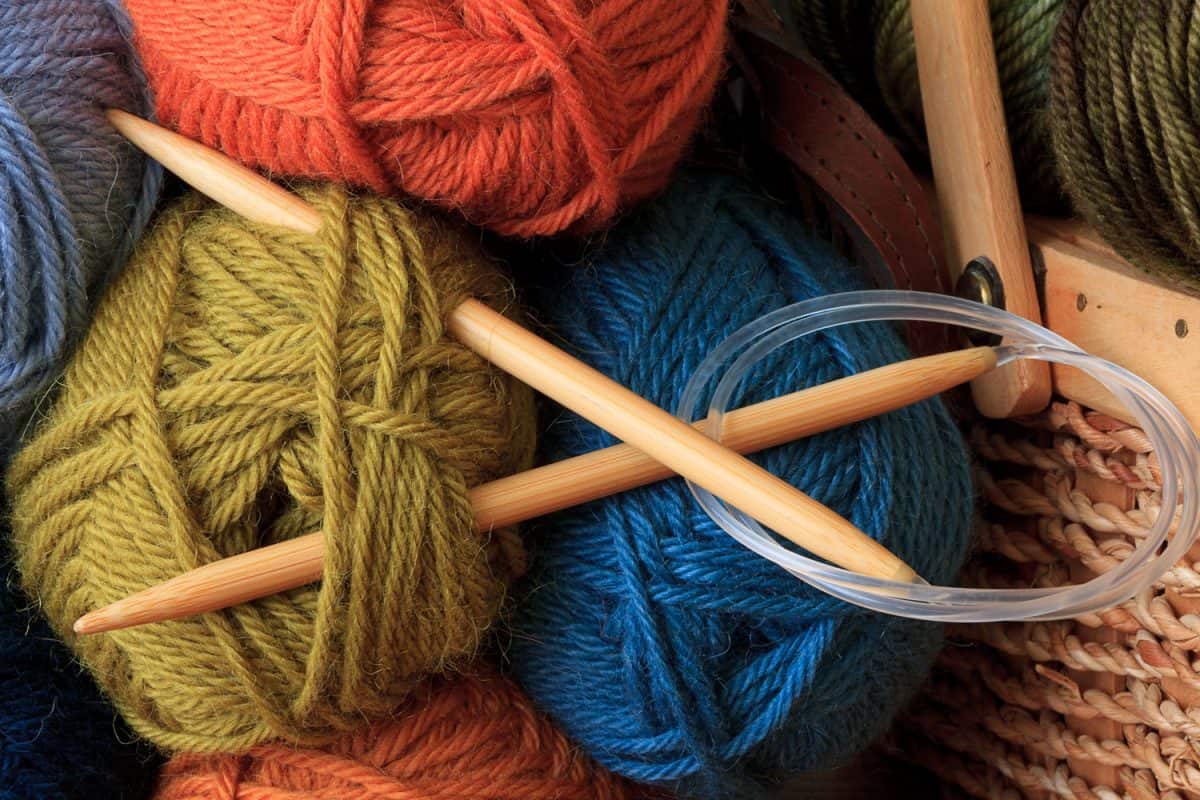
The amount of time it takes to felt wool will be affected by what texture you are wanting to achieve as well as the method you use to achieve it. A simple felting by hand pulling may only take 40 minutes to a few hours depending on the amount of wool.
Expect to spend an hour or two wet felting a three- to five-pound wool using a washing machine. This includes the amount of time the wool spends in the washer and the time you would need to spend arranging the wool before as well as after washing. Drying wet wool can take 10 to 12 hours or more depending on your climate.
Dry felting using a clothes dryer may be the quickest method. It might take up to 30 minutes to pull the yarn and then the dryer time added. You could have the whole process finished in under 45 minutes to an hour.
Final Thoughts
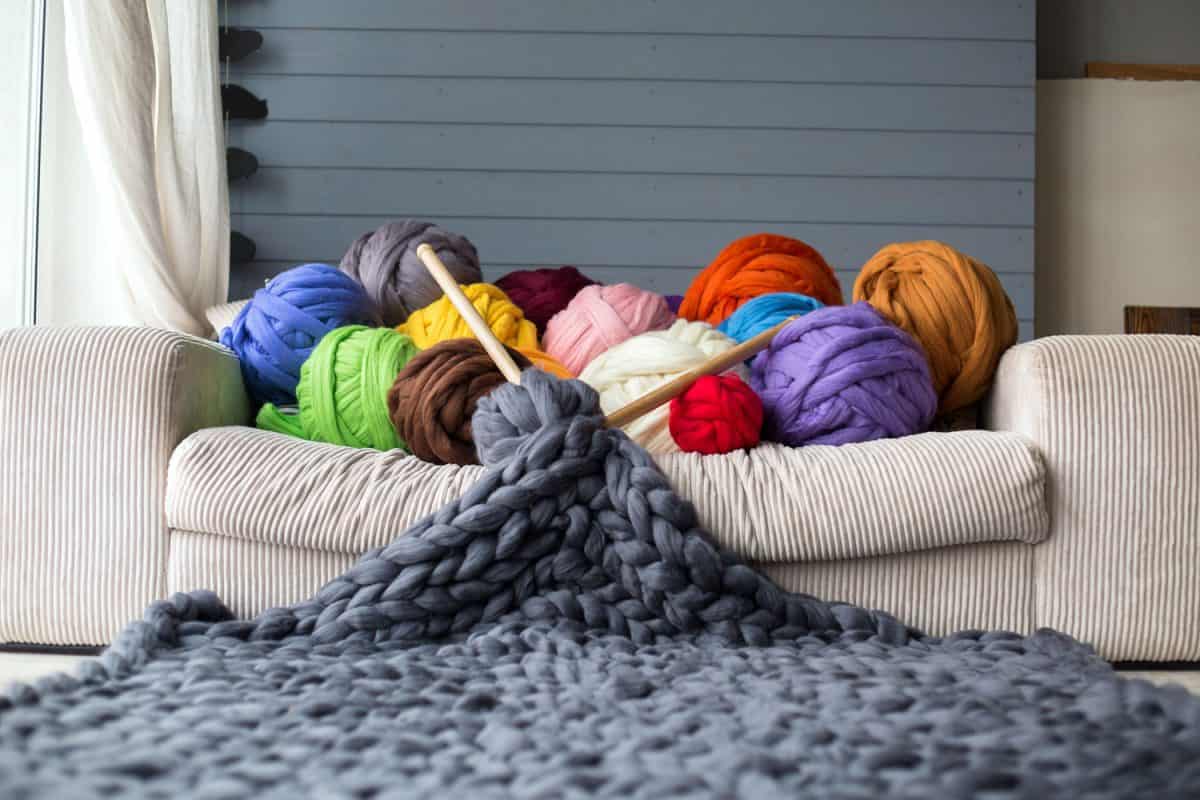
Now that you know some methods for felting Merino wool for various projects and the steps involved in each one, have fun experimenting! There are many other ways of felting. Find one that's enjoyable and suits your individual project, and you'll be turning out special Merino wool crafts in no time.
You may also be interested in the following:




![Read more about the article How Much Sewing Thread Do You Need For A Project? [Here’s How To Tell]](https://craftsbliss.com/wp-content/uploads/2020/12/assorted-and-mutilcolored-spools-of-threads-in-a-table-How-Much-Sewing-Thread-Do-You-Need-For-A-Project-Heres-How-To-Tell-500x333.jpg)
![Read more about the article Can You Glue Ceramic Back Together? [And How To]](https://craftsbliss.com/wp-content/uploads/2023/01/Hand-applying-liquid-glue-on-ceramic-broken-pieces-repairing-a-green-plate.-Can-You-Glue-Ceramic-Back-Together-And-How-To-500x333.png)

![Read more about the article What Are The Best Scissors For Cutting Paper? [Inc. Examples]](https://craftsbliss.com/wp-content/uploads/2020/10/A-safety-scissor-placed-next-to-papers-and-pencils-at-a-teachers-desk-500x333.jpg)

